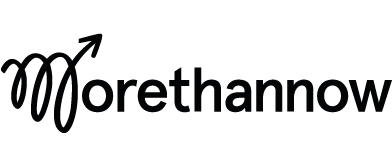The Analogue Revolution.
It’s early Monday morning and all I can hear is the hum of a distant vacuum cleaner in the office. My WiFi is disconnected, my phone is off and I’ve got a couple of hours until the working week begins. For all intents and purposes, I’m hiding from the digital world.
It’s the most productive time of my week.
I’ve accepted the rarity of these moments as an inescapable fact of modern life, and I’m starting to question why. Because increasingly, the distraction of a connected, always-on workplace is becoming a problem. The more I learn about the limits of our attention, the more I view it as a resource as precious as time or money. Bad things happen when we spend it recklessly.
“An information-rich world means a scarcity of whatever it is that information consumes. What information consumes is rather obvious: it consumes the attention of its recipients”
That's Nobel Laureate, Herbert Simon and that world was 1971. These days, ‘information-rich’ seems a rather quaint term amid the buzzes, bleeps and pings that form the soundtrack to our lives. Collectively, we process 34 billion Whats App messages and 269 billion emails per day, and our smartphone use and media consumption continue to soar. Through push notifications, the apps we download gain intimate access to our every moment, creating habits that are easy to form and nigh-impossible to break.
I’m not a technophobe; really, I’m not. But we should be worried about the commercial value of our attention. The algorithms created to mine this resource drill into our character until they find a combination of words and images we find irresistible. They’re fine-tuned until they strike the oil of a click, a view or a purchase and they’re repeated again and again.
If that wasn’t enough, enter another corporate favourite - the ‘digital transformation’ and its influence on the ‘future of work’. This particular brand of progress isn’t designed to sell us things but to ‘revolutionise our 9-5 and bring us smarter, agile and more collaborative workplaces’. How does it do this? By increasing connectivity and allowing us to contribute from anywhere and at any time. By replicating the social communities that have transformed our personal lives.
We should treat such promises more critically.
We can start with the macro-view of the Solow Paradox - the correlation between a reduction in productivity growth in the 80's and the rapid acceleration in technological advance:
“What everyone feels to have been a technological revolution...has been accompanied everywhere...by a slowdown in productivity growth”
It’s not enough to suggest causality but it should inject some healthy skepticism. It means that when IBM – for example – proudly claim that they send 2.5 million internal messages every day, we may pause our adulation and consider whether always-on employees are actually happier or higher performing? Has this question been approached with the rigour of a scientific mind? Try ‘the hype and reality of social media use for work collaboration and team communication’ if you’re interested in a thoroughly ambiguous answer - it may make you think twice about your latest Yammer roll-out.
I don’t intend to belittle the enormous potential of digital or technology - my plea is nothing more than to think harder about its consequences. Maybe your instant messaging tool will improve collaboration and productivity. Maybe an e-learning module on well-being could make us all happier. Maybe a new employee app will make bleeps and pings that connect us with our work in meaningful ways...
But we should also consider the opposite: that all these initiatives could just as easily harm our performance and mental health. In truth, there’s no need for a revolution - we just need to bring a bit more balance and rigour to finding out.

